Since crashes are common for hobbyist radio-controlled planes, you’ll probably need to acquire specific replacement parts for your plane from time to time. With access to 3D printing, you can make durable custom parts on-demand, which is great news for the aspiring pilot.
3D printing suits this application well due to its ability to manufacture accurate, durable parts with little prior experience and cost on the user’s behalf. As materials and machines become more advanced, the line between prototype and end-use 3D printed parts gets increasingly blurred. So, there has never been a better time to 3D print replacement parts for RC aircraft.
Sometimes, individual parts for specific plane models can be hard to find, so the easier solution is to use entire plane models as a spare copy of your aircraft. This is why we’ve included some sources that provide complete plane models, which you can tear apart for spares.
Without further ado, here are the best sources for 3D printed RC plane parts so your crashes won’t leave you grounded for long!
Flite Test
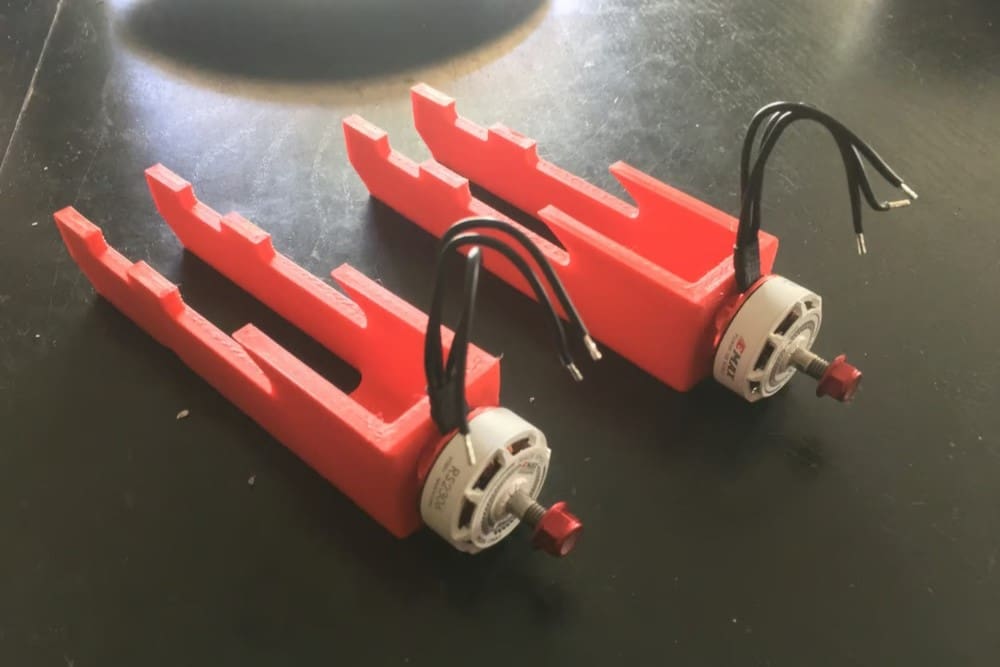
If you haven’t heard of Flite Test, they’re one of the largest online supporters of the RC aircraft hobby. Run by president Josh Bixler and host Josh Scott, Flite Test provides an educational and supportive environment for hobbyists. YouTube is a major outlet for Flite Test and a great place to find answers to your RC questions.
3D modeling is used and taught in many of their videos, making it a great place to learn how to make and model your own RC plane parts. This collection of parts is just a small portion of what has been contributed to the community by Flite Test.
- Assortment: Parts only
- Type of support: YouTube videos and community forums
- Price: Free
3DLabPrint

3DLabPrint is by far one of the best places to get your RC plane files. Sold as complete kits, these planes are extremely detailed and supported by a larger community. 3DLabPrint is also commonly used by Flite Test and often promoted by them. With many more options to choose from, you’ll find yourself wanting to buy every model!
Models are detailed and highly accurate. There’s also quite a bit of variety, including stunt, warfare, water, and beginner models, making it the most accommodating site on this list. Individual parts are even available for purchase, along with upgrade kits to aid your 3D printed aviation adventure. The purchasable files start at $5. They also regularly hold sales on both their filament and plans.
- Assortment: Parts, full models, and LW-PLA spools in colors matching the models
- Type of support: Detailed PDF and video instructions for every model
- Price: $5-$60
Eclipson

Eclipson Airplanes is another online website that sells RC airplane designs similar to those found on other platforms. The main difference is each plane comes with in-depth schematics and videos to guide you through the building process.
Designs include full wing (UAV/RC) models, water aircraft, and generic plane designs. Models start at $16, and prices stay fairly consistent. If your model ever breaks, do not fear! Eclipson has a Thingiverse page where you can find many different parts to fix your model and get it back up and running.
- Assortment: Full models and parts
- Type of support: Detailed PDF and video instructions
- Price: Free test prints, model parts (1 full model free), and others from $16-$42
Thingiverse
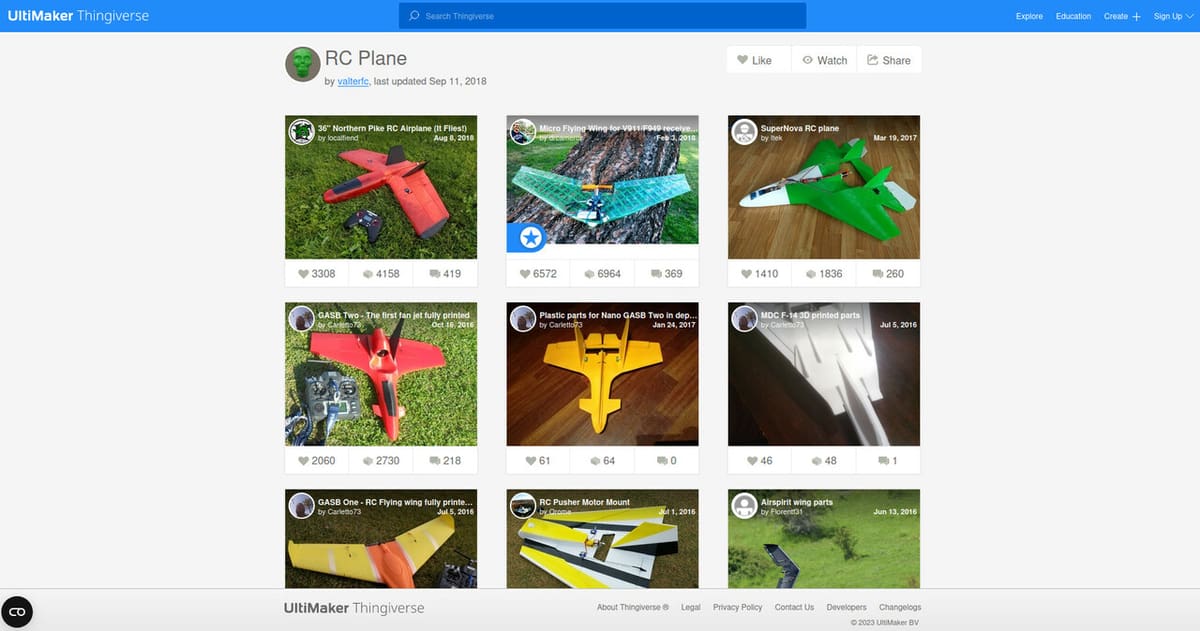
Valterfc has kindly organized a public collection including the most popular planes on Thingiverse. If you’re looking for less common designs, this is the place to get them. As seen above, delta-winged planes (or similar remixes) are quite popular, along with other RC planes.
Another benefit to using these models is that you can access a large community remixing and fix any problems with the current files. It’s easy to adapt and remix, depending on license restrictions.
- Assortment: Full models
- Type of support: Thingiverse, various community forums for specific designs
- Price: Free files
Kraga
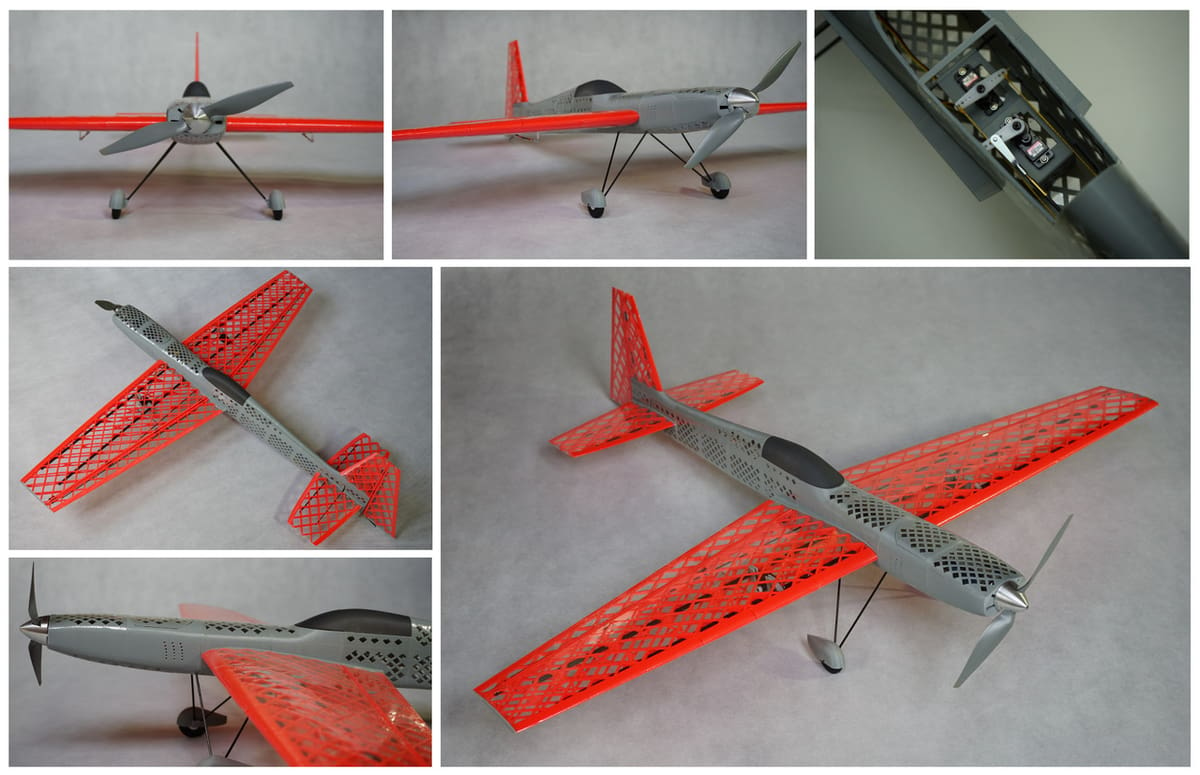
Kraga is a small, lesser-known site that’s home to multiple plane models. The models require a hybrid construction with a 3D printed frame and additional materials for strength. E3D’s Sanjay Mortimer calls them “vitamins” in Thomas Sanladerer’s YouTube video.
After printing these models, you’ll have the freedom to print as many parts as needed for any repairs down the road. Each purchase includes an in-depth PDF to help you assemble your new airplane correctly, along with a list of maintenance tricks.
- Assortment: Full models, including sailplanes and powered glider options
- Type of support: Instructions included with the files
- Price: $5-$43
Planeprint
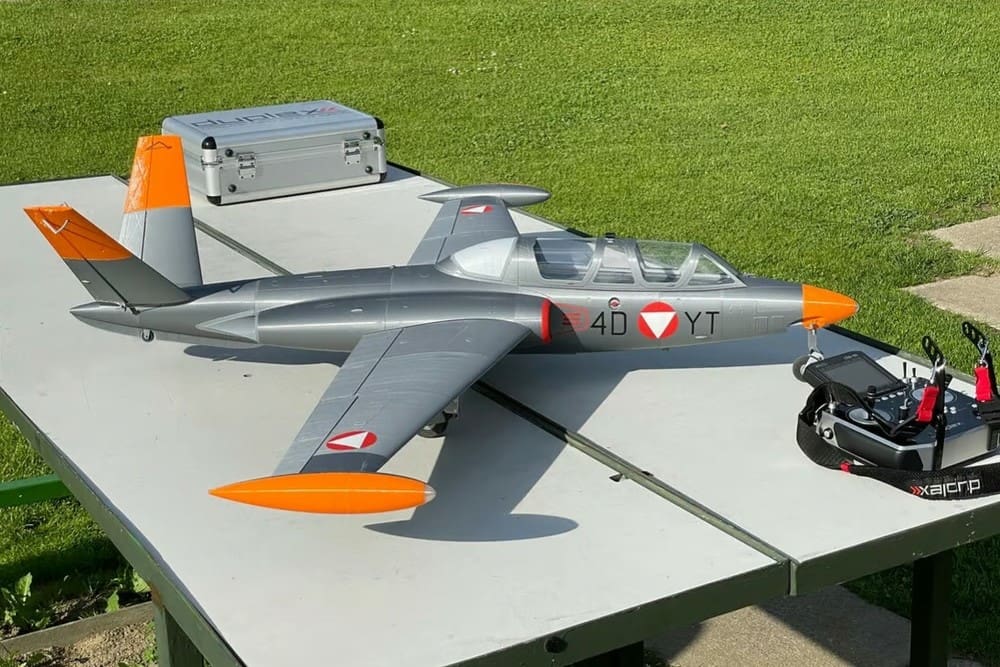
Planeprint is a lesser-known but fairly complete website with several 3D printable plane designs, including scale models of the early 1900 designs, sleek jet planes powered by electric duct fans (EDF), modern water planes, and some exotic designs that will turn heads in the air.
Ranging between $18 and $60 per design for purchase, they include STL files, while the printing profiles are listed openly. You can easily print replacement parts or multiple airframes for these models to have a backup ready to go.
- Assortment: Full models
- Type of support: Detailed PDF instructions
- Price: $18-$60
SoarKraft

SoarKraft is another small niche website for 3D printed plane pilots. The site offers full models and individual segments of airplanes to combine them into a desired airframe. However, it’s niche in that the aircraft listed are generally meant to be gliders, and the models aren’t designed with beginner pilots in mind.
- Assortment: Full models and parts, mostly sailplanes
- Type of support: Documentation for assembly
- Price: $2-$25
Owlplane

Owlplane is a relatively new website from Indonesia, started in 2020. The catalog of models is pretty all-encompassing, including slow propeller flying planes and F-16 scale models with EDFs that go really fast.
All models are flight tested before being listed and come with descriptive sheets. There are a number of common RC parts available for free in the Library section of the website. The plane files range from $25 to $45 and include not only plane models but also plane stand files and other accessories. This allows for easy maintenance on the plane after it’s assembled or during assembly or repair.
- Assortment: Full models and parts
- Type of support: Descriptive sheets for each model
- Price: $25-$45
Craycle
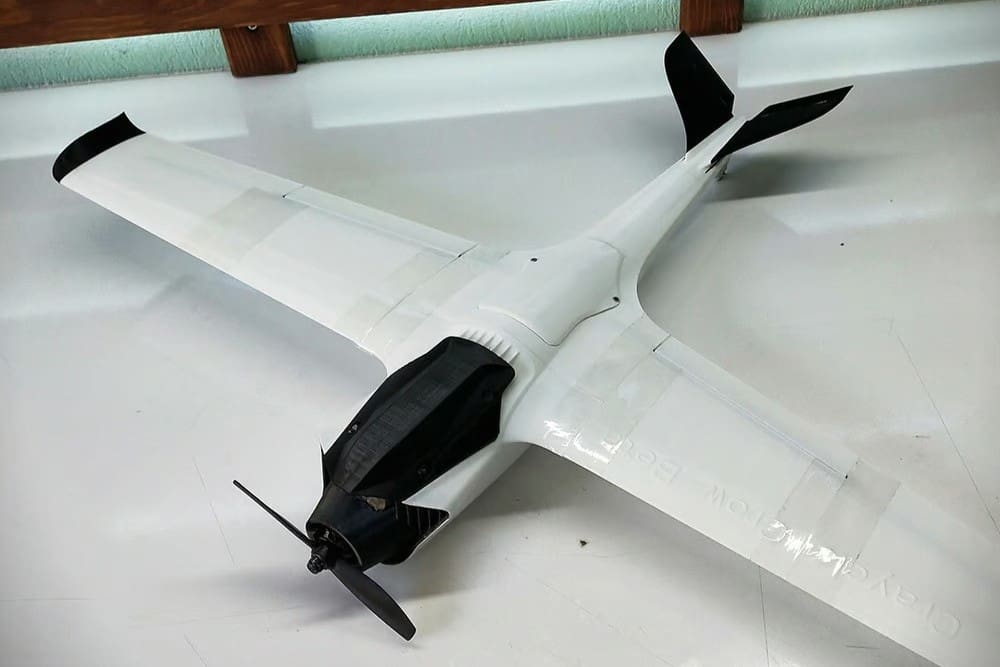
Craycle is a company focused on making first person view (FPV) compatible aircraft. Their huge library includes everything from trainer types to fast acrobatic and racer planes. They also have dedicated FPV hatch models depending on the FPV equipment one wishes to mount on a given airframe. The designs are capable of extra payload if not using FPV gear.
- Assortment: Full models and parts
- Type of support: Detailed PDF instructions
- Price: $0-$77
Bonus: BBC One Course

This one is a bit off the beaten (flight) path from the rest of the sites on our list. However, this free BBC One program walks you through all the different steps involved in 3D modeling, from choosing the right aerodynamic parameters to 3D printing RC planes.
It’s included on this list because if you have a 3D printer and the relevant knowledge, you can easily measure your existing plane’s dimensions and design the parts to fit onto it to match your preferences with no limitations.
However, if you’ve never piloted an RC plane before, don’t try to design your own plane. You want to learn how to fly on a proven, safe, and stable airframe so that you know whether the issue is with your piloting input or the airframe being unstable in the air. This course is recommended for beginner and intermediate modelers and teachers, but not beginner pilots.
